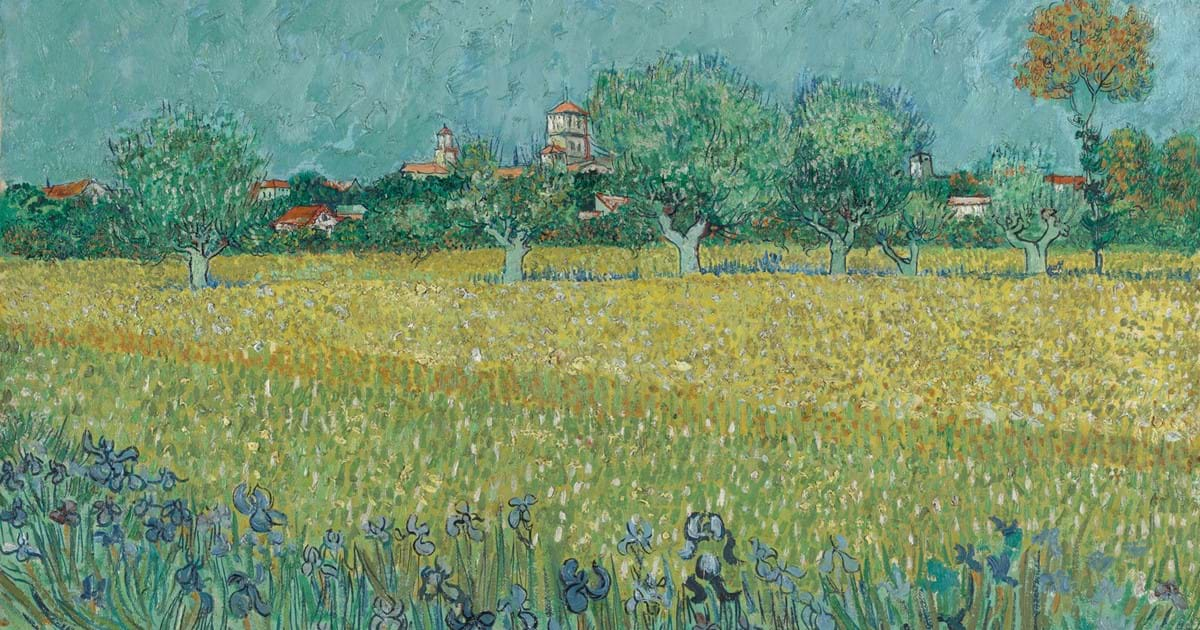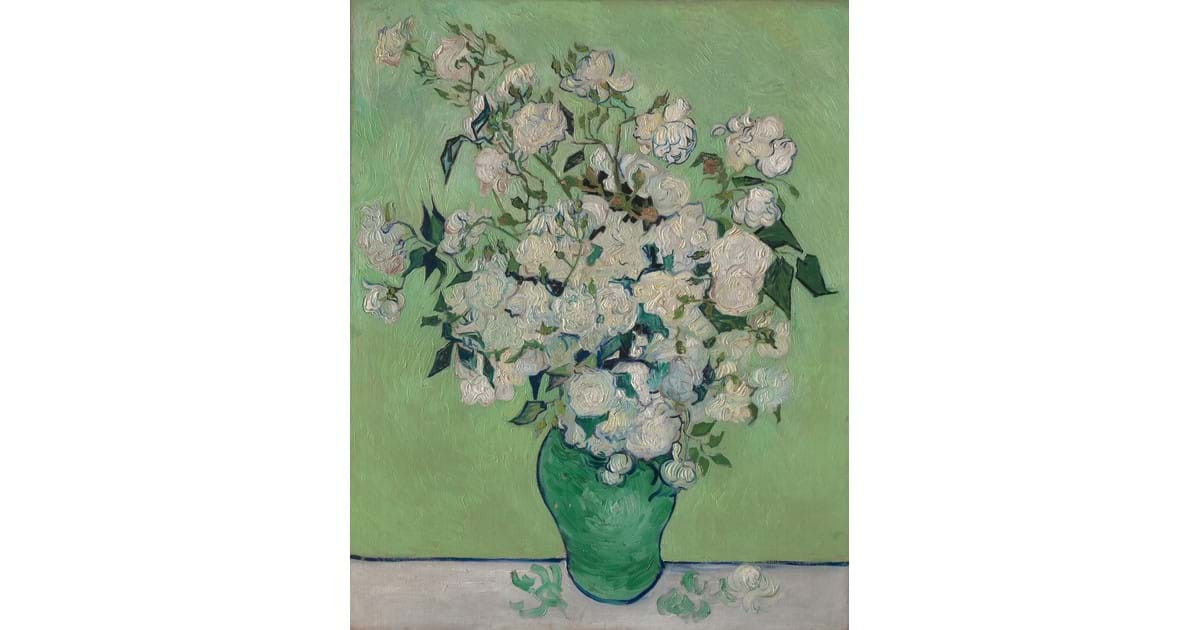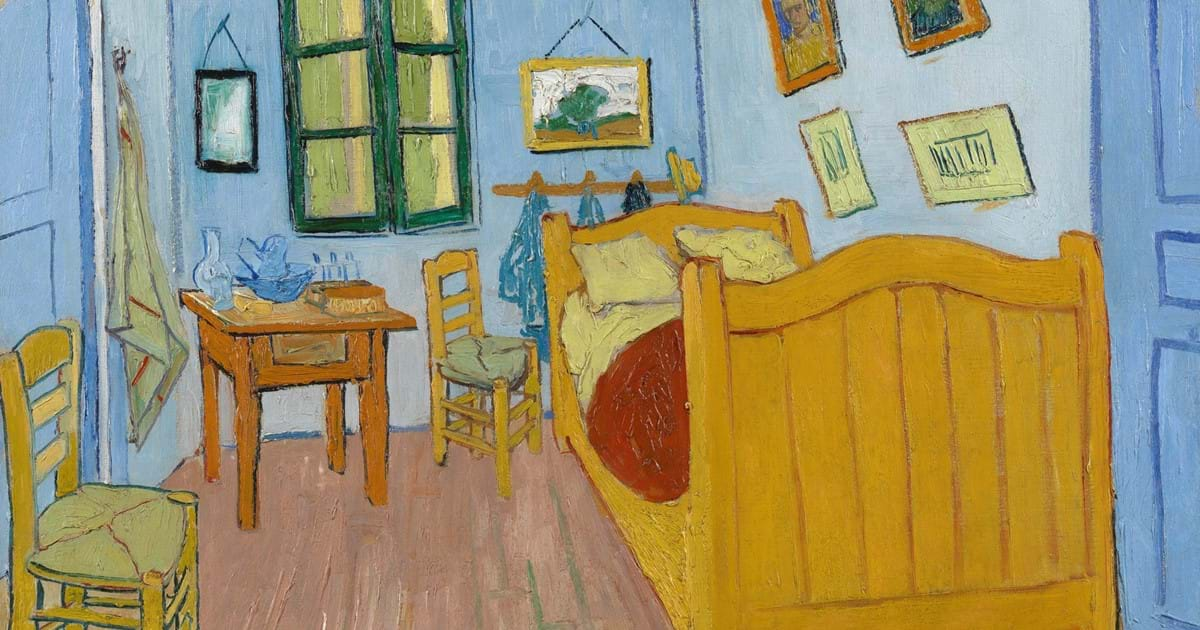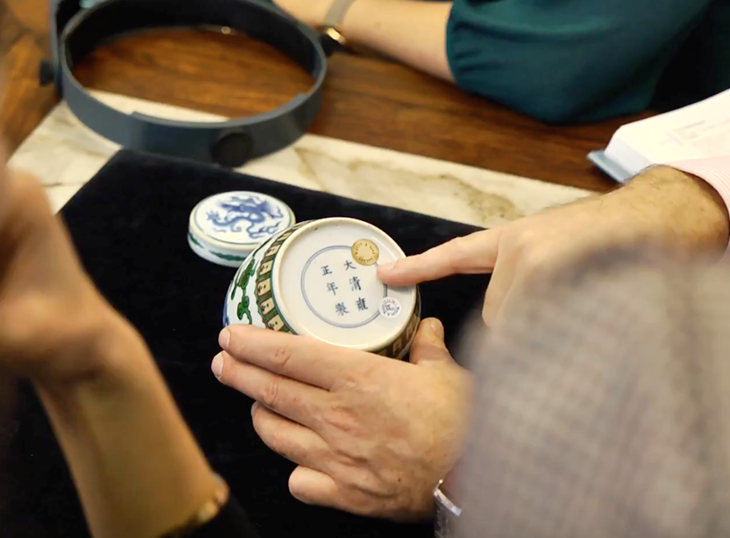The Experimental Materials and Techniques of Vincent van Gogh
22nd June 2018Vincent van Gogh is famous for using experimental methods and materials in creating his paintings. The pigments he used in his works had just come onto the art market as his artistic career began to develop.
He used these new pigments to achieve the brilliantly vivid colours he strove for in his paintings. A lack of chemical stability however meant that the pigments often had the effect of fading over time. Van Gogh knew of their vulnerabilities and thus took the precaution of applying them in brighter, more concentrated colours than he actually wanted as the final result. It makes one wonder, at which point in the inevitable fading process, the colours had dulled to the exact vivid tones van Gogh was striving for. He also experimented with the application of the paint, creating thick impasto impressionist strokes which pushed his use of Impressionism into Post-Impressionism.

In a letter to Theo, van Gogh describes the irises in “Field with Irises near Arles” as purple. Looking at the painting today, the irises are blue.
The first step in producing any painting is to choose the support you will be working on. In his letters to his brother Theo, van Gogh explains how he used to use ‘panel’ referring to the artist boards made of a carboard like material with canvas applied to the top as well as his transition to canvas¹. These canvases were specifically chosen based upon their weave which he then prepared and stretched himself².
Upon this support van Gogh laid his ground. This ground is a protective layer between the canvas and the layers of paint which van Gogh prepared himself. This was a revolutionary technique in modern painting. Although underpainting was not new and had been used extensively prior to van Gogh, the vivacity and range of the colour hues van Gogh employed in his imprimatura were distinctive and exciting. Van Gogh combined the ground and the underpainting by applying a coloured ground in order to save on time and materials³.
Van Gogh’s letters to Theo also show that he was ordering a lot of geranium lake⁴, a bright red synthetic organic pigment. Lake pigments are made by precipitating an organic dye with a binder⁵; usually metallic salt⁶. Lake pigments were not new to the art market and had been in use for thousands of years. Geranium lake was made from eosin (a bromine derivative of fluorescein, or one of its salt or other derivatives) which was one of the world’s first synthetic dyes. It was first discovered by Caro in 1871⁷ and fifteen years later it was used as an artist’s paint⁸. Red lake pigments are infamously prone to being susceptible to light which results in fading. This is not only evident in red areas but also where the paint has been mixed, such as purple areas where red and blue were mixed; leaving areas of blue as the red slowly fades.
Similarly, the pink blossoms in 'Roses' lost their colour by 1907.
Pigment breakdown and the resultant fading was a problem in van Gogh’s oeuvre. His quest for vivid colours often led him to use organic pigments such as geranium lake which have brighter and richer colours but are more prone to fading. However, new inorganic pigments that van Gogh experimented with also had stability issues. This can be seen in his use of chrome yellow in pieces such as ‘Sunflowers’. The pigment contains sulphate groups which reduce its stability under light, turning the paint to a brownish green with too much light exposure⁹.
Van Gogh used these pigments for their brightness and intensity even though he was aware of the lack of lightfastness. As such, he applied the colours with greater vivacity to try and counteract the fading process which itself was an innovative method of painting¹⁰.

The walls in 'The Bedroom' are said to have been purple, not the blue we see now.
Van Gogh showed further experimentation with his method of applying paint to the support. He is said to be a pioneer of the use of impasto in his paintings not only to create textured surfaces, but to add emotion and movement to the piece¹¹. On examination of his use of impasto it has been noted that his paints were fluid enough that trailing threads formed where the brush was lifted from the canvas but the consistency was viscous enough that crisply defined brush marks were apparent in the impasto¹². This visual evidence of his brushwork allows the viewer to gain an insight into his method of applying paint, allowing them to feel a greater connection to the artist and his process. The use of impasto in combination with colour to convey emotion was innovative on the part of van Gogh and contrasted to the work of other Post Impressionists such as Gauguin and Bernard¹³.
We can conclude from examining van Gogh's paintings that he was innovative in both his choice of materials and the application of these materials. The preparation of his canvas, choice of paint and the method of applying this paint were all carefully considered and experimental. This pioneering process had both great benefits and great downfalls. Van Gogh created paintings that were vibrant, textured and emotionally tangible but do have permanency issues; the colours were prone to fading and the impasto can experience deep craquelure and the small areas of raised paint are areas of vulnerability.
An artistic genius working with flawed materials to create a lasting and ever-changing legacy.
[1] Van Gogh, Vincent, Vincent van Gogh: The Letters, Van Gogh Museum, http://vangoghletters.org/vg/letters.html
[2] Ibid
[3] Ibid
[4] Ibid
[5] Museum of Fine Arts, Boston, Lake, http://cameo.mfa.org/wiki/Lake
[6] The Editors of Encyclopaedia Britannica, Lake Pigment, Encyclopaedia Britannica, https://www.britannica.com/technology/lake-pigment
[7] Museum of Fine Arts, Boston, Eosin, http://cameo.mfa.org/wiki/Eosin
[8] Matthijs de Keijzer et al, Early synthetic organic lake pigments used by Vincent van Gogh at the end of his lifetime, Netherlands Institute for Cultural Heritage (ICN), Research Department, file:///C:/Users/mwh/Downloads/Keijzer-2009-VanGogh-synthkleurstoffen.pdf
[9] Sarah Everts, Van Gogh’s Fading Colors Inspire Scientific Inquiry, Chemical & Engineering News: American Chemical Society, C&En, https://cen.acs.org/articles/94/i5/Van-Goghs-Fading-Colors-Inspire.html
[10] Van Gogh Museum, Original Colours of van Gogh’s Paintings, file:///C:/Users/mwh/Downloads/REVIGO-2017-Original-colours-of-Van-Gogh's-paintings%20(1).pdf
[11] The Van Gogh Gallery, Van Gogh’s Painting Technique: Impasto, http://blog.vangoghgallery.com/index.php/en/2012/12/17/van-goghs-painting-technique-impasto/
[12] Ella Hendriks and Shannon Hughes, “Van Gogh’s Brushstrokes: Marks of Authenticity?” in Art, Conservation and Authenticities; Material, Concept, Context, Ed. Erma Hermens, Tina Fiske, (London: Archetype,2007), p. 145.
[13] Foundation Vincent van Gogh Arles, Van Gogh Paintings in Arles: Colours and Brushstrokes, http://www.fondation-vincentvangogh-arles.org/en/documentation-2/vincent-van-gogh/les-tableaux-de-van-gogh-a-arles-couleurs-et-coups-de-brosse/





